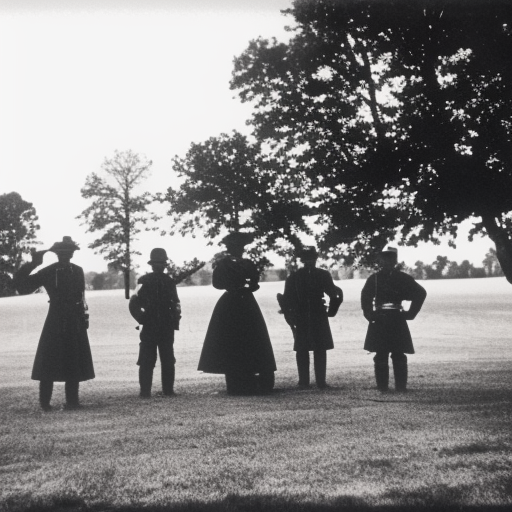Summary:
The Manassas Campaign was a series of battles fought during the American Civil War in 1861. It marked the first major land engagement between the Union and Confederate armies. The campaign consisted of two battles, the First Battle of Bull Run and the Second Battle of Bull Run, both of which took place near the town of Manassas, Virginia. These battles had a significant impact on the course of the war and demonstrated the challenges both sides would face in the coming years.
The First Battle of Bull Run:
The First Battle of Bull Run, also known as the First Battle of Manassas, took place on July 21, 1861. It was fought between the Union Army of Northeastern Virginia, commanded by Brigadier General Irvin McDowell, and the Confederate Army of the Potomac, commanded by Brigadier General P.G.T. Beauregard. The battle began with an initial Union advance, but the Confederates were able to hold their ground and launch a counterattack. The Union forces were ultimately forced to retreat, and the battle ended in Confederate victory. The First Battle of Bull Run shattered the Union’s hopes of a quick victory and demonstrated the need for better training and organization.
The Second Battle of Bull Run:
The Second Battle of Bull Run, also known as the Second Battle of Manassas, took place from August 28 to August 30, 1862. It was fought between the Union Army of Virginia, commanded by Major General John Pope, and the Confederate Army of Northern Virginia, commanded by General Robert E. Lee. The battle began with a series of Confederate attacks that pushed the Union forces back. Despite some initial success, the Union forces were eventually overwhelmed and forced to retreat. The Second Battle of Bull Run ended in Confederate victory and allowed General Lee to launch his first invasion of the North.
Impact and Significance:
The Manassas Campaign had several important implications for the American Civil War. Firstly, it revealed the unpreparedness of both the Union and Confederate armies. The battles highlighted the need for better training, organization, and leadership on both sides. Additionally, the Confederate victories at Bull Run boosted Southern morale and demonstrated that the war would not be easily won by the Union. The battles also highlighted the importance of strategic locations, such as Manassas, in controlling the region.
The Manassas Campaign also had political implications. The Union’s defeat at Bull Run led to a reevaluation of military leadership and strategy. It prompted President Abraham Lincoln to replace General McDowell with General George B. McClellan as the commander of the Union Army of the Potomac. The campaign also solidified General Lee’s reputation as a skilled military strategist and boosted his confidence in future battles.
Furthermore, the Manassas Campaign had a significant impact on public opinion. The battles shocked the Northern population, who had expected a quick and decisive victory. The losses suffered by the Union Army led to a realization that the war would be long and costly. In the South, the victories at Bull Run bolstered support for the Confederacy and increased enlistment numbers.
In conclusion, the Manassas Campaign was a crucial series of battles in the American Civil War. The First Battle of Bull Run and the Second Battle of Bull Run demonstrated the challenges faced by both the Union and Confederate armies. These battles revealed the need for better training and leadership and had significant political and public opinion implications. The Manassas Campaign set the stage for future conflicts and shaped the course of the war.












